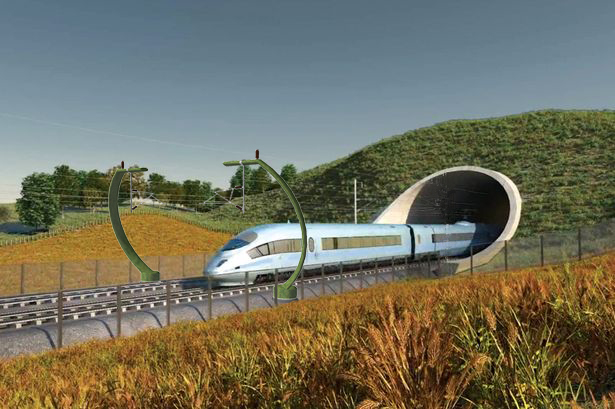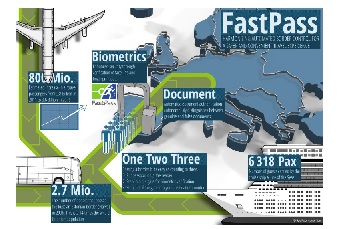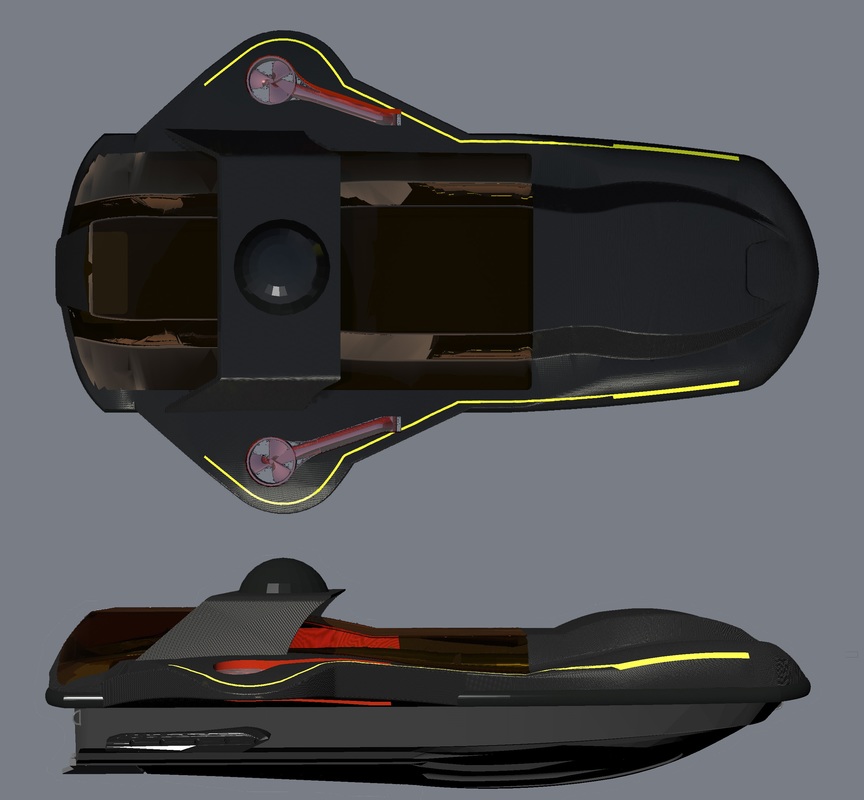Intrepid Minds Research
INTREPID MINDS has a background in engineering research. Our research is both internal and external to the company and covers a wide range of subjects. Government organisations such as Innovate UK; Small Business Research Initiative (SBRI) UK and the European Commission (Framework 7, Horizon 2020) have provided INTREPID MINDS with the backbone to research fundamental challenges to society through structured grants.
Our research subjects include engineering and systems technologies and application in several fields linked to secure society. Some of our research is listed below:
- Hubz, (Supported by DFID HVT)
- AIMS, Advanced Infrastructure Monitoring System (supported by Innovate UK)
- PROTECT (supported by the European Commission)
- ARC, High Speed Rail Archway System
- FastPASS (supported by the European Commission)
- Fenceless Fence (supported by Innovate UK and the Welsh Government)
- LEMUSV (supported by Innovate UK and the UK DSTL)
Our research subjects include engineering and systems technologies and application in several fields linked to secure society. Some of our research is listed below:
- Hubz, (Supported by DFID HVT)
- AIMS, Advanced Infrastructure Monitoring System (supported by Innovate UK)
- PROTECT (supported by the European Commission)
- ARC, High Speed Rail Archway System
- FastPASS (supported by the European Commission)
- Fenceless Fence (supported by Innovate UK and the Welsh Government)
- LEMUSV (supported by Innovate UK and the UK DSTL)
Hubz
Intrepid Minds was given some seed funding for the development of a South African based, cross Africa logistics network focussed on the support of the rural communities in South Africa. The project is 6 months in duration and aims to conclude in 2019. As part of this project the company started the brands Hubz and Alkuto to develop the technologies further and spread the brand past its initial African origins.
Intrepid Minds was given some seed funding for the development of a South African based, cross Africa logistics network focussed on the support of the rural communities in South Africa. The project is 6 months in duration and aims to conclude in 2019. As part of this project the company started the brands Hubz and Alkuto to develop the technologies further and spread the brand past its initial African origins.
AIMS
Intrepid Minds’ led a 12 month project with support from Innovate UK and in partnership with the Manufacturing Technology Centre to develop an infrastructure monitoring system with 'advancement properties' in every sector of monitoring and maintenance from current state of the art. As part of the development, several areas of the original project brief got pushed even further forward as the team took direct feedback from industries and end users.
As a direct output from this project Intrepid Minds developed several aerial, surface and sub-surface drones as well as a complete end to end integrated system with additional modular sensor nodes should critical data not be immediately available. Each of the products developed became commercially available within 6 months of completion of the project.
Intrepid Minds’ led a 12 month project with support from Innovate UK and in partnership with the Manufacturing Technology Centre to develop an infrastructure monitoring system with 'advancement properties' in every sector of monitoring and maintenance from current state of the art. As part of the development, several areas of the original project brief got pushed even further forward as the team took direct feedback from industries and end users.
As a direct output from this project Intrepid Minds developed several aerial, surface and sub-surface drones as well as a complete end to end integrated system with additional modular sensor nodes should critical data not be immediately available. Each of the products developed became commercially available within 6 months of completion of the project.
PROTECT
Intrepid Minds’ border control innovation group has teamed up with the University of Reading, the UK Home Office’s Centre for Applied Science and Technology and other European partners to launch PROTECT – a HORIZON 2020-funded programme to design and prototype “contactless” border controls for the European Union.
The goal of the PROTECT project is an enhanced biometric-based person identification system that works across a range of border crossing types and has strong user-centric features. Prototype systems will be deployed in Automated Border Control (ABC) areas, supporting border guards to facilitate smooth and non-intrusive rapid crossing by travellers. The concept is based on deployment of innovative network communications infrastructures, mobile phone technology and the next generation of biometric identification detection methods.
To achieve this, a multi-biometric enrolment and verification system is envisaged, taking into account current and next-generation e‐Passport chips, mobile equipment and person identification ‘on the move’.
The PROTECT consortium will be composed of border control/security experts, academics, technologists, industry partners and stakeholder representatives from those sections of society likely impacted by changes to the way border control is performed in Europe.
PROTECT will run fully-functional prototypes of its designs for new biometric border control systems in working locations.
Chris Hurrey, former Assistant Director with the UK Immigration Service and Senior Consultant with Intrepid Minds says:
“It is necessary to tease out carefully the objectives and scope of this call for proposals. It is concerned with using biometrics and related technology to facilitate crossing of EU external frontiers by non-EU citizens, especially frequent travellers – but at the same time optimising security and the integrity of the immigration control. As such, it is therefore closely linked to the EU’s Smart Borders initiative. Ideally any systems should cover EU citizens as well, whether or not they are frequent travellers.”
Since greater use of personal data impacts upon human rights, there needs to be an honest and assertive study of what the risks are to privacy and how this risks are mitigated and balanced by improving the travel experience and security of the citizen.
Intrepid Minds and our partners will address the following questions:
Intrepid Minds’ border control innovation group has teamed up with the University of Reading, the UK Home Office’s Centre for Applied Science and Technology and other European partners to launch PROTECT – a HORIZON 2020-funded programme to design and prototype “contactless” border controls for the European Union.
The goal of the PROTECT project is an enhanced biometric-based person identification system that works across a range of border crossing types and has strong user-centric features. Prototype systems will be deployed in Automated Border Control (ABC) areas, supporting border guards to facilitate smooth and non-intrusive rapid crossing by travellers. The concept is based on deployment of innovative network communications infrastructures, mobile phone technology and the next generation of biometric identification detection methods.
To achieve this, a multi-biometric enrolment and verification system is envisaged, taking into account current and next-generation e‐Passport chips, mobile equipment and person identification ‘on the move’.
The PROTECT consortium will be composed of border control/security experts, academics, technologists, industry partners and stakeholder representatives from those sections of society likely impacted by changes to the way border control is performed in Europe.
PROTECT will run fully-functional prototypes of its designs for new biometric border control systems in working locations.
Chris Hurrey, former Assistant Director with the UK Immigration Service and Senior Consultant with Intrepid Minds says:
“It is necessary to tease out carefully the objectives and scope of this call for proposals. It is concerned with using biometrics and related technology to facilitate crossing of EU external frontiers by non-EU citizens, especially frequent travellers – but at the same time optimising security and the integrity of the immigration control. As such, it is therefore closely linked to the EU’s Smart Borders initiative. Ideally any systems should cover EU citizens as well, whether or not they are frequent travellers.”
Since greater use of personal data impacts upon human rights, there needs to be an honest and assertive study of what the risks are to privacy and how this risks are mitigated and balanced by improving the travel experience and security of the citizen.
Intrepid Minds and our partners will address the following questions:
- How non-intrusive can we make identity confirmation systems for the border?
- How fast and usable can we make these systems?
- Can we at the same time improve reliability, accuracy and security?
- How do they fit in with the EU’s own future border control plans?
- Are there commercially exploitable products coming out of this research?
ARC, High Speed Rail Archway System
Following a design competition run by RIBA (Royal Institute of British Architects) for new rail archways in the UK, Intrepid Minds took that initial design and begun to develop the engineering science behind the initial design to incorporate a lot of the requirements we see from rail clients around the world.
The ARC is a fully designed archway specifically for use in high speed railways where the magnitude of difficulty in reaching the train and providing sustainable, reliable connectivity, stability and safety are paramount. Our design is focussed on creating an aerodynamic wave around the train which holds the vehicle in place while slightly raising the train allowing for less unsprung mass on the bogie.
The ARC themselves also house new infrastructure for 3/4/5G connectivity to the train as well as all standard radio communications and tracking/diagnostics tools. The ARC also has a modular construction allowing for easy access in maintenance cycles and the possibility for online diagnostics of all active equipment.
Following a design competition run by RIBA (Royal Institute of British Architects) for new rail archways in the UK, Intrepid Minds took that initial design and begun to develop the engineering science behind the initial design to incorporate a lot of the requirements we see from rail clients around the world.
The ARC is a fully designed archway specifically for use in high speed railways where the magnitude of difficulty in reaching the train and providing sustainable, reliable connectivity, stability and safety are paramount. Our design is focussed on creating an aerodynamic wave around the train which holds the vehicle in place while slightly raising the train allowing for less unsprung mass on the bogie.
The ARC themselves also house new infrastructure for 3/4/5G connectivity to the train as well as all standard radio communications and tracking/diagnostics tools. The ARC also has a modular construction allowing for easy access in maintenance cycles and the possibility for online diagnostics of all active equipment.
FastPASS
Led by the Austrian Institute of Technology (AIT), Intrepid Minds has taken a large and active role in the management of stakeholders, development of requirements, leadership of demonstrators and documentation of operational processes for this detailed cross-European research project to develop a harmonised, modular border control solution.
Since 2013 Intrepid Minds has been a key link in an 18 company consortia which has researched the processing of individuals and vehicles across land, sea and air borders within the European Union. With Intrepid Minds experience from senior public roles in the border control industry our input into the requirements gathering work has led to multiple developments in the field of biometrics and the processing algorithms behind that technology.
The end solution for the FastPASS project is able to be incorporated into multiple border types across the EU and so therefore provides a standardised, harmonised approach to border control technology that fits with many international standards in the field.
Led by the Austrian Institute of Technology (AIT), Intrepid Minds has taken a large and active role in the management of stakeholders, development of requirements, leadership of demonstrators and documentation of operational processes for this detailed cross-European research project to develop a harmonised, modular border control solution.
Since 2013 Intrepid Minds has been a key link in an 18 company consortia which has researched the processing of individuals and vehicles across land, sea and air borders within the European Union. With Intrepid Minds experience from senior public roles in the border control industry our input into the requirements gathering work has led to multiple developments in the field of biometrics and the processing algorithms behind that technology.
The end solution for the FastPASS project is able to be incorporated into multiple border types across the EU and so therefore provides a standardised, harmonised approach to border control technology that fits with many international standards in the field.
|
Fenceless Fence
INTREPID MINDS were commissioned in 2014 to develop a virtual fence product for keeping livestock within an imaginary boundary outlined via a remote display. Using our knowledge of RFID and renewable energy solutions Intrepid Minds developed two prototypes which have since been successfully trialled in the UK |
LEMUSV
The Long Endurance Marine Unmanned Surface Vehicle (LEMUSV) project was initiated in 2012 by the UK NOC, NERC and DSTL to develop a next generation unmanned surface vehicle with the capability to operate for over 6 months in all sea states. The focus of the project was to create a vehicle which could house a series of sensors for researching the oceans.
INTREPID MINDS made the most of this six month engagement to understand in detail the requirements of these vessels, but more importantly, the common challenges faced by the wide array of products on the market. As part of this research, INTREPID MINDS developed an in house design capability for boat building, development of structures utilising carbon fibre, 3D printing and electric powertrain manufacture.
Moving on from the LEMUSV work, INTREPID MINDS networked with a series of end users to develop the Indagatus product and now forms the back bone of every other vessel we develop, including version 3 of Indagatus itself.
The Long Endurance Marine Unmanned Surface Vehicle (LEMUSV) project was initiated in 2012 by the UK NOC, NERC and DSTL to develop a next generation unmanned surface vehicle with the capability to operate for over 6 months in all sea states. The focus of the project was to create a vehicle which could house a series of sensors for researching the oceans.
INTREPID MINDS made the most of this six month engagement to understand in detail the requirements of these vessels, but more importantly, the common challenges faced by the wide array of products on the market. As part of this research, INTREPID MINDS developed an in house design capability for boat building, development of structures utilising carbon fibre, 3D printing and electric powertrain manufacture.
Moving on from the LEMUSV work, INTREPID MINDS networked with a series of end users to develop the Indagatus product and now forms the back bone of every other vessel we develop, including version 3 of Indagatus itself.






